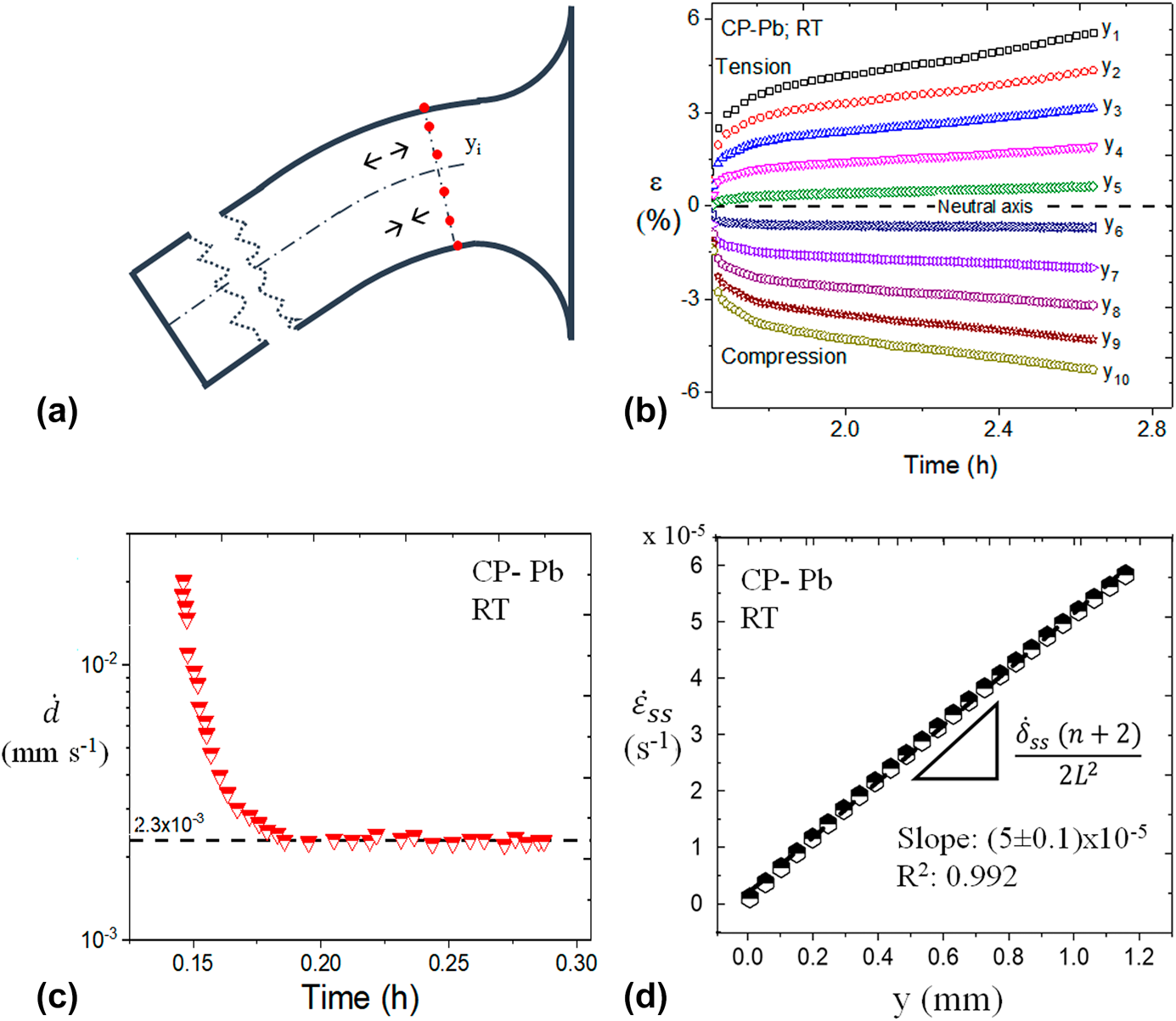Crossref Citations
This article has been cited by the following publications. This list is generated based on data provided by
Crossref.
Afzal Jalali, Syed Idrees
Kumar, Praveen
and
Jayaram, Vikram
2020.
High Throughput Determination of Creep Parameters Using Cantilever Bending: Part II - Primary and Steady-State through Uniaxial Equivalency.
Journal of Materials Research,
Vol. 35,
Issue. 4,
p.
362.
Jalali, Syed Idrees Afzal
Kumar, Praveen
and
Jayaram, Vikram
2020.
Customized High-Temperature Bending with DIC for High-Throughput Determination of Creep Parameters: Technique, Instrumentation, and Optimization.
JOM,
Vol. 72,
Issue. 12,
p.
4522.
Jalali, Syed Idrees Afzal
Kumar, Praveen
and
Jayaram, Vikram
2020.
High Throughput Determination of Creep Parameters Using Cantilever Bending: Part I - Steady-State.
Journal of Materials Research,
Vol. 35,
Issue. 4,
p.
353.
Jalali, Syed Idrees Afzal
Kumar, Praveen
and
Jayaram, Vikram
2020.
Microstructural equivalence between bending and uniaxial creep.
Scripta Materialia,
Vol. 186,
Issue. ,
p.
99.
Jayaram, Vikram
2022.
Small-Scale Mechanical Testing.
Annual Review of Materials Research,
Vol. 52,
Issue. 1,
p.
473.
Singh, Shobhit Pratap
Jayaram, Vikram
Srinivasan, Dheepa
and
Kumar, Praveen
2022.
High throughput determination of creep behavior of additively manufactured AlSi10Mg alloy.
Additive Manufacturing,
Vol. 58,
Issue. ,
p.
103049.
Kulkarni, Anup
Srinivasan, Dheepa
Ravanappa, Praveen
Jayaram, Vikram
and
Kumar, Praveen
2023.
Creep behavior of additively manufactured high strength A205 aluminum alloy.
Additive Manufacturing Letters,
Vol. 6,
Issue. ,
p.
100142.
Singh, Dinesh
Srinivasan, Dheepa
Ghosh, Abhijit
Jayaram, Vikram
and
Kumar, Praveen
2023.
Creep Life Assessment of In-Service Components by Testing Sub-Standard Sized Samples in Bending: An Example Case of X22CrMoV12-1 Ferritic Steel Used in Steam Turbines.
Transactions of the Indian National Academy of Engineering,
Vol. 8,
Issue. 3,
p.
449.
Jalali, Syed Idrees Afzal
Bhowmick, Sanjit
Jayaram, Vikram
and
Kumar, Praveen
2023.
Sample size effect on creep in bending: An interplay between strain gradient and surface proximity effects.
Journal of Materials Research,
Vol. 38,
Issue. 12,
p.
3059.
Hijazi, Faizan
Pavan, A.H.V.
Jayaram, Vikram
and
Kumar, Praveen
2024.
Material volume reduction for creep testing using composite cantilevers and its application for residual life assessment.
Materials Science and Engineering: A,
Vol. 918,
Issue. ,
p.
147440.
Goel, Priya
Pramanik, Aparajita
Jayaram, Vikram
Banerjee, Dipankar
and
Kumar, Praveen
2024.
High-throughput estimation of transient creep response of a Ti6Al alloy using bending.
Journal of Materials Research,
Vol. 39,
Issue. 23,
p.
3316.
Inman, Samuel B.
Garber, Kevin W.
Robertson, Andreas E.
Brown, Nathan K.
Dingreville, Remi
and
Boyce, Brad L.
2025.
Stochastic room temperature creep of 316 L stainless steel.
International Journal of Plasticity,
Vol. 189,
Issue. ,
p.
104326.
